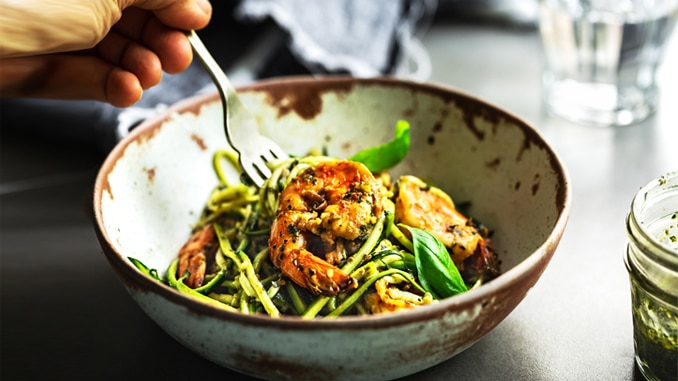
With an increased awareness of how our diets can impact our health, there has been a global surge in the need for healthy alternatives to processed grain-based products. Whether you suffer from celiac disease, grain brain or are looking to make healthier lifestyle choices, you don’t have to look far to see that vegetables are claiming their place at the table as a substitute for just about everything. From avocado chocolate brownies to beetroot cake and squash spaghetti, we are now finding increasingly ingenious ways of getting more vegetables into our diets.
One of the most popular and simple ways to do this is by replacing grain-heavy pasta or spaghetti with a spiralized vegetable substitute. But, fear not. There is no longer a need to be intimidated by fancy or complicated kitchen gadgets. With an increase in demand, grocery stores are beginning to carry their own ready spiralized vegetables – ready to cook within minutes. Failing that, a simple speed peeler will give you perfect spaghetti strips in a matter of minutes.
Whether you are trying to avoid the grains, dodging the carbs or trying to get more vegetables into your families’ diet, this is a fun and easy option for all the family. This list is a great starting point for some of the healthiest options available in-store and at home.
Zucchini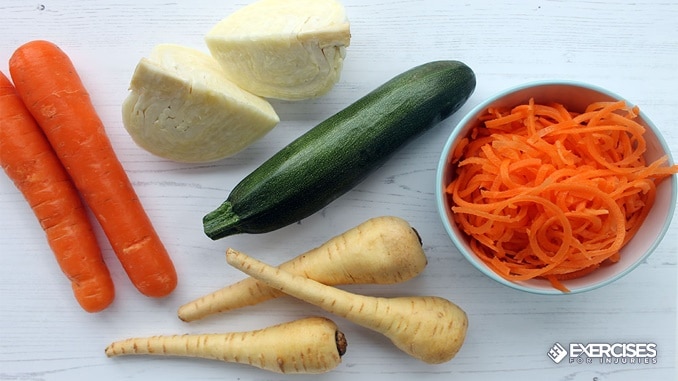
A member of the squash family, zucchini is perhaps the most popular vegetable-based spaghetti alternative available. Store-bought or prepared at home, zucchini spaghetti can provide an abundance of health benefits when used in place of a grain-based pasta. Low in calories, zucchini is packed with vitamin C and inflammation-fighting phytonutrients.
Pros: Quick and easy to prepare, zucchini pasta is the ultimate speedy weeknight meal. Perfect spiralized or peeled into strips, zucchini can also be sliced into thick strips and used in place of pasta sheets in lasagna. With a relatively low-carb count, zucchini makes a great pasta alternative for a low-carb diet.
Cons: The water content of zucchini is high. Cooking the zucchini so that it is just al dente will help to retain its texture and avoid soggy noodles.
Carrots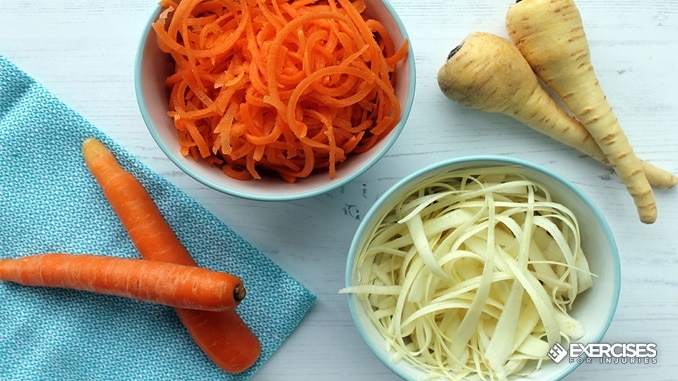
An abundant source of vitamin A, carrots are loaded with nutrients essential to maintaining eye health and vision. Packed with antioxidants, carrots also help support immune system health and reduce inflammation.
Pros: Carrots can be both spiralized or peeled into pasta strips and eaten cooked or raw making them great for quick meals and packed lunches.
Cons: Although relatively low in carbs compared with other starchy vegetables, carrots are not suitable for those following a strict low-carb or ketogenic diet.
Parsnips
Much like carrots, parsnips are another root vegetable ideal for replacing pasta. Packed with a hearty dose of fiber and loaded with vitamin C, parsnips are also an excellent source of folate, beneficial in fighting gum disease and supporting heart health.
Pros: Parsnips can be spiralized or peeled into thick strands to replace a tagliatelle. With a natural sweetness and firm texture, parsnips hold up well to rich and flavorsome pasta sauces.
Cons: As with carrots, parsnips contain a moderate amount of carbs so will need to be avoided by anybody following a strict low-carb or ketogenic diet.
Cabbage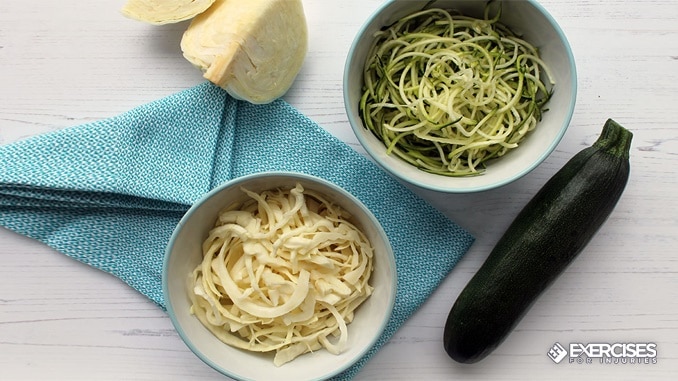
As a member of the cruciferous vegetable family, cabbage is a powerhouse of nutrition. Low in calories and high in fiber, cabbage is high in antioxidants and provides a wealth of cancer-fighting properties.
Pros: A cheap and budget-friendly vegetable, shredded cabbage creates a firm yet a tender alternative to noodles or pasta. Quick to prepare and with no fancy gadgets required, cabbage noodles are ready in only a matter of minutes.
Cons: The potential negative effects of cruciferous vegetables like cabbage on thyroid health have been called into question in recent years. However, studies have demonstrated that cooking the vegetables well and consuming in moderation should offset these effects.
Squash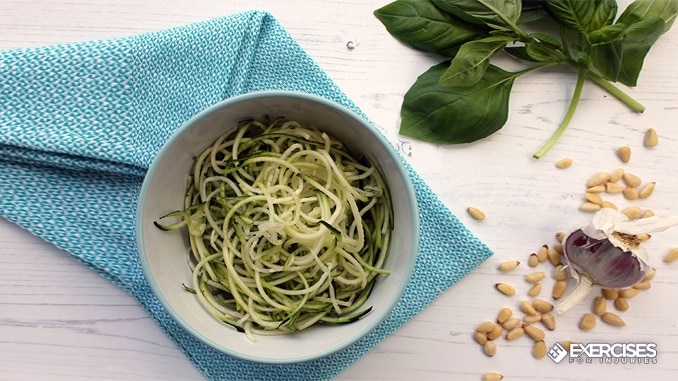
Winter squash like butternut, acorn, and spaghetti all make rich and nutritious alternative spaghettis. With an impressive offering of essential vitamins and minerals, squash is packed with antioxidants, support immune system health and lower inflammation.
Pros: Squash can be spiralized or peeled into strips to create a quick-cooking pasta alternative. Additionally, spaghetti squash requires no peeling or spiralizing. When baked in an oven, the flesh of the squash provides instant noodles ready to be dressed in a sauce of your choice. Spaghetti squash itself is also relatively low in carbs and can be eaten in moderation as part of a low-carb diet.
Cons: Many varieties of winter squash can be a source of fermentable oligo-, di-, monosaccharides and polyols (FODMAPS), so these may be best avoided by those suffering from irritable bowel syndrome (IBS).
Suggested Alternative Pasta Uses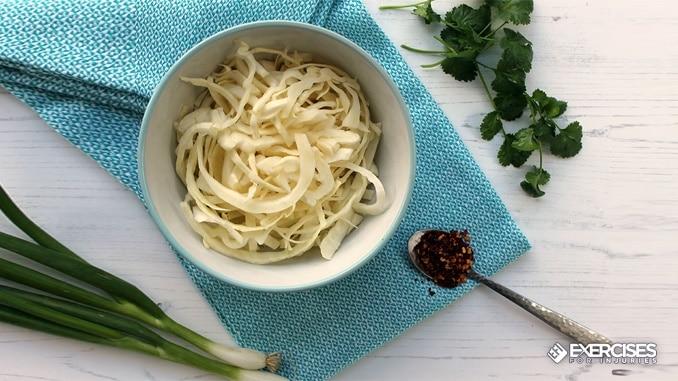
Pasta alternatives are simple to prepare at home ― not to mention delicious, nutritious and budget-friendly. With no fancy equipment required, why not start today? Here are a few simple recipe suggestions to get you started ― with or without a spiralizer.
To utilize cabbage in place of noodles, take a small red or white cabbage, remove the tough outer leaves and cut out the firm core and discard. Using a sharp knife, finely slice across the cabbage so that you are left with long, thin strips.
Heat two tablespoons of olive oil or coconut oil in a heavy frying pan over a low to medium heat and add the cabbage strips. Sauté gently until the cabbage is soft and tender, stirring often – about 10 minutes. For a simple stir-fry noodle base, try adding some dried red chili flakes to the pan along with diced scallions. Stir thoroughly and add fresh chopped cilantro. Serve with pan-fried salmon.
Zucchini is another classic option and can be both spiralized or peeled into strips with a vegetable peeler. The above recipe would work equally as well with zucchini as these make a great alternative to noodles. However, if you are looking for a quick and easy spaghetti meal, there are few things quite as simple to make and tasty as pesto.
Spiralize or peel the zucchini into spaghetti strips. They will reduce by a third in size once cooked, so be generous.
To create a simple but healthy pesto sauce, add one cup of fresh spinach and two cups of fresh basil to a food processor along with a peeled garlic clove, a good pinch of sea salt and three tablespoons of pine nuts or walnuts. Add 1/4 cup of Parmesan cheese or nutritional yeast for dairy free and blend until chunky paste forms. Add between 1/3 and 1/2 cup of extra virgin olive oil slowly. The amount is dependent on how thin you would like the pesto to be. Then, blend to combine.
Add the prepared zucchini to a large heavy pan with two tablespoons of olive oil over a low to medium heat and cover. Cook until just tender, stirring often. The zucchini will release its own liquid when cooking but if your spaghetti is a little dry or sticking, add a little water or vegetable broth. Once cooked, drain any excess liquid from the zucchini and stir the pesto sauce in thoroughly.
For your guide to the best foods to heal and slim your body, check out The Best Foods that Rapidly Slim & Heal in 7 Days, here!

